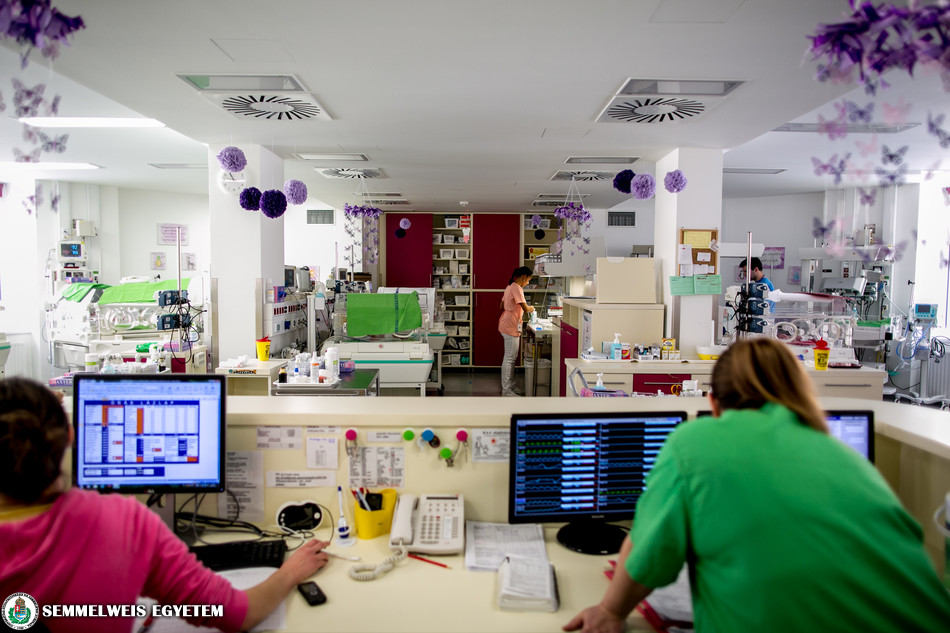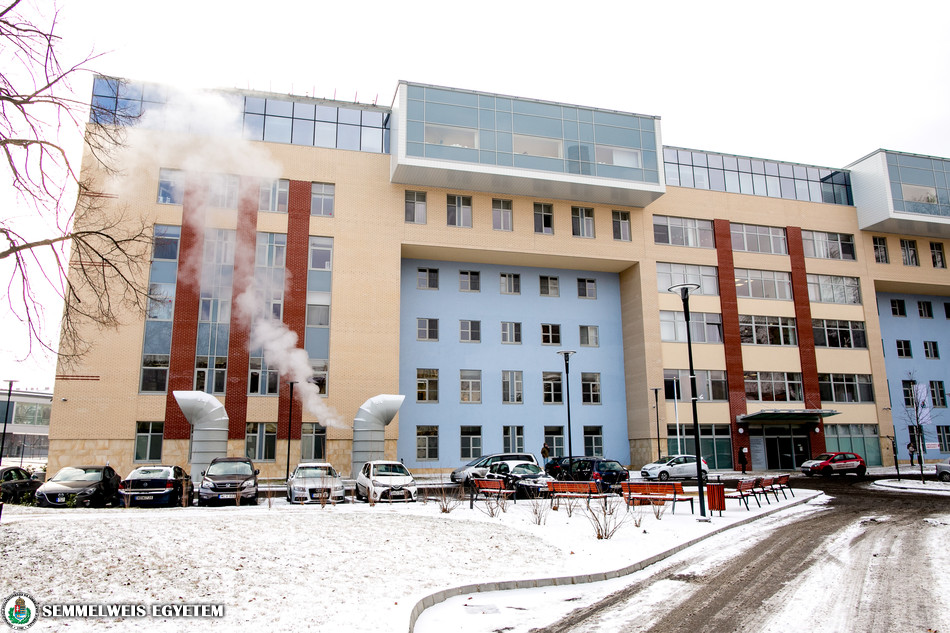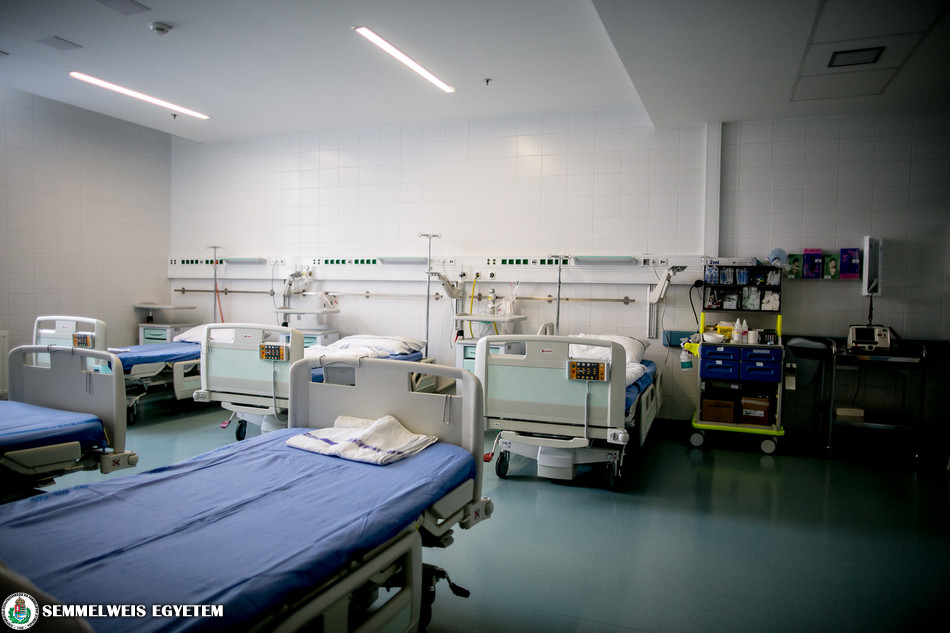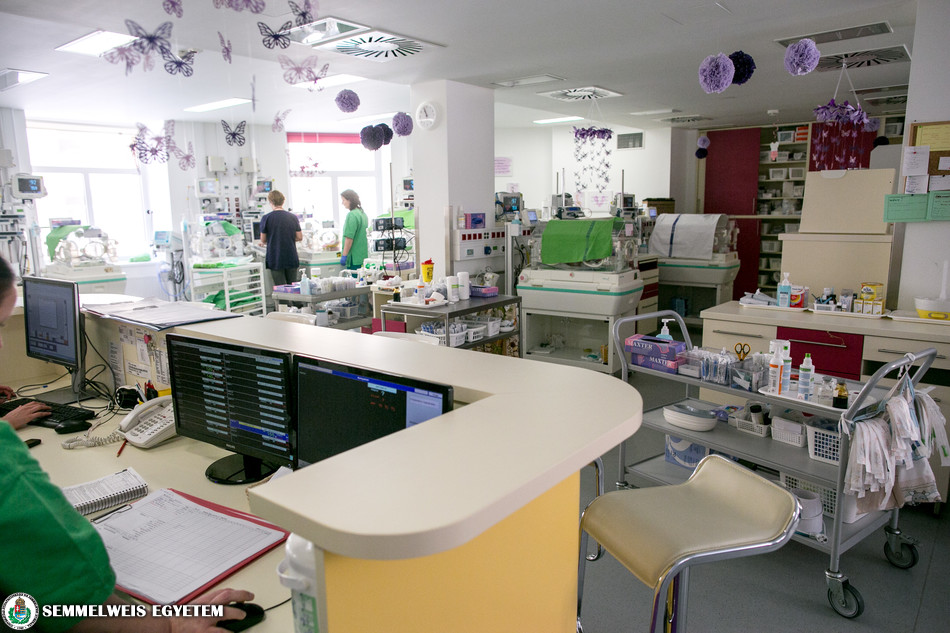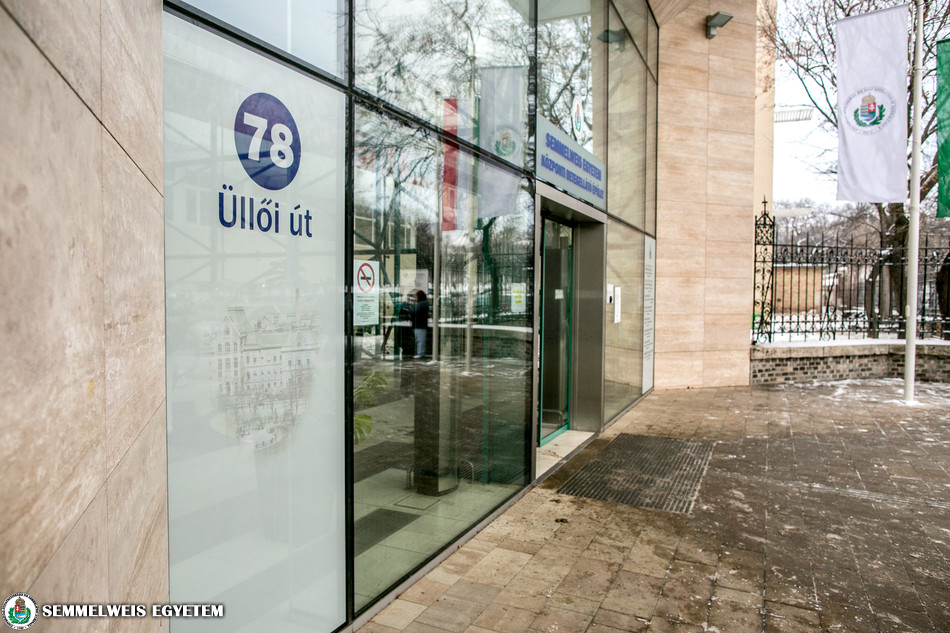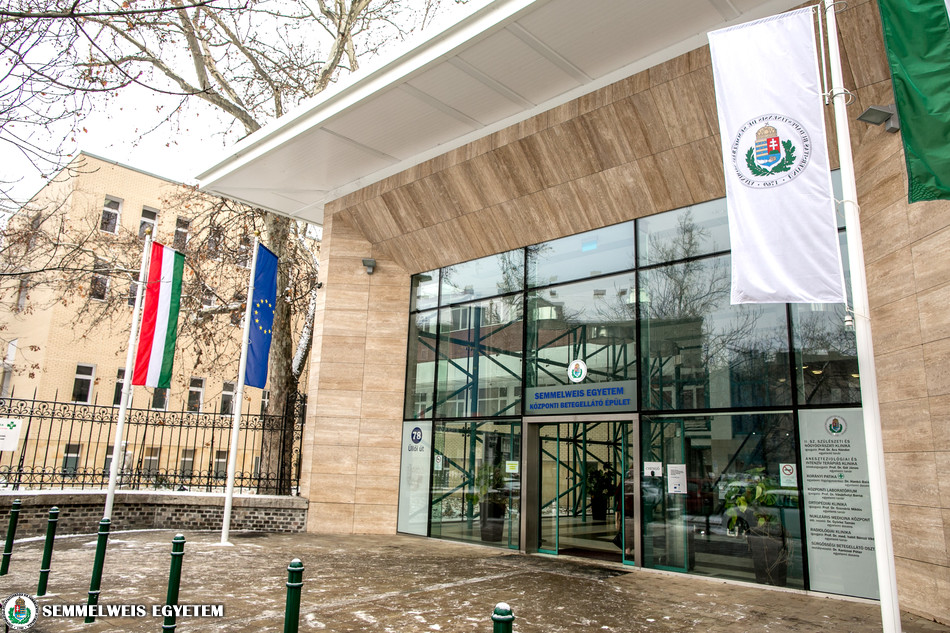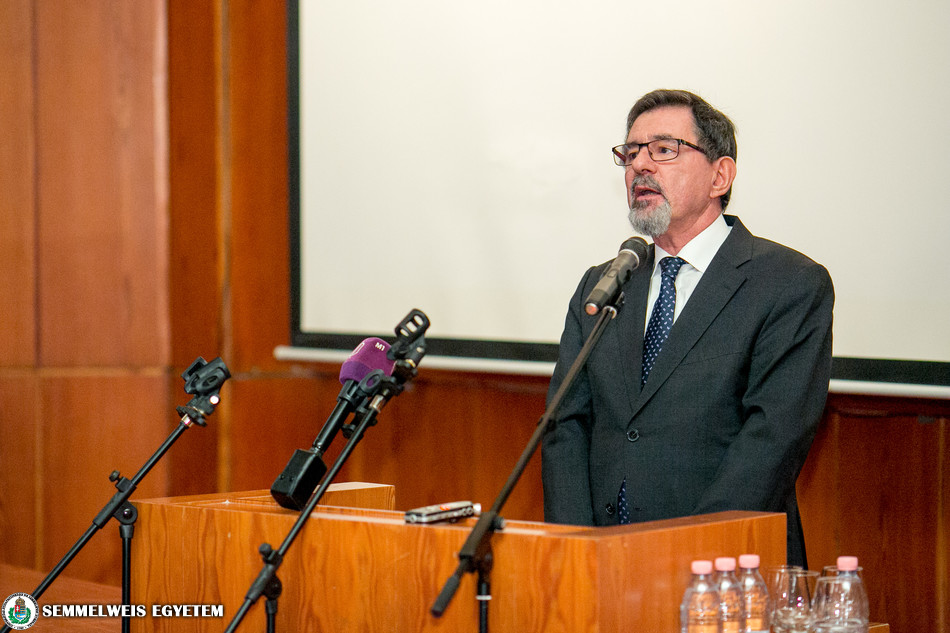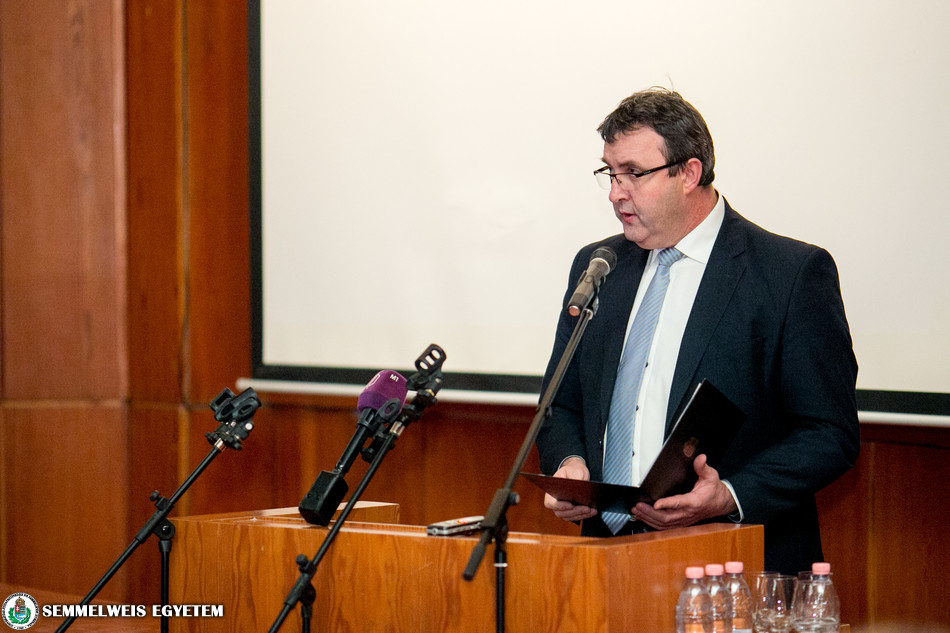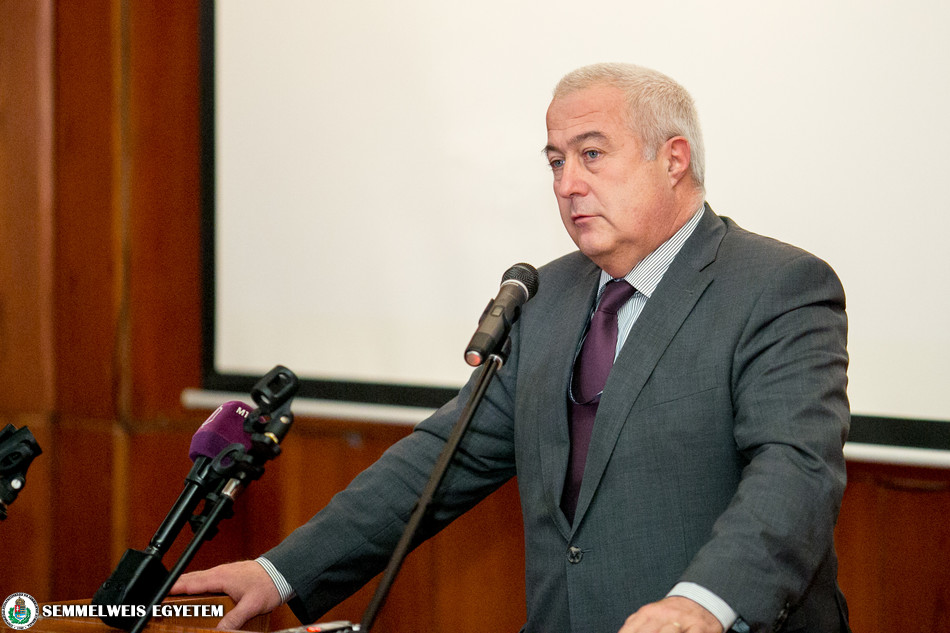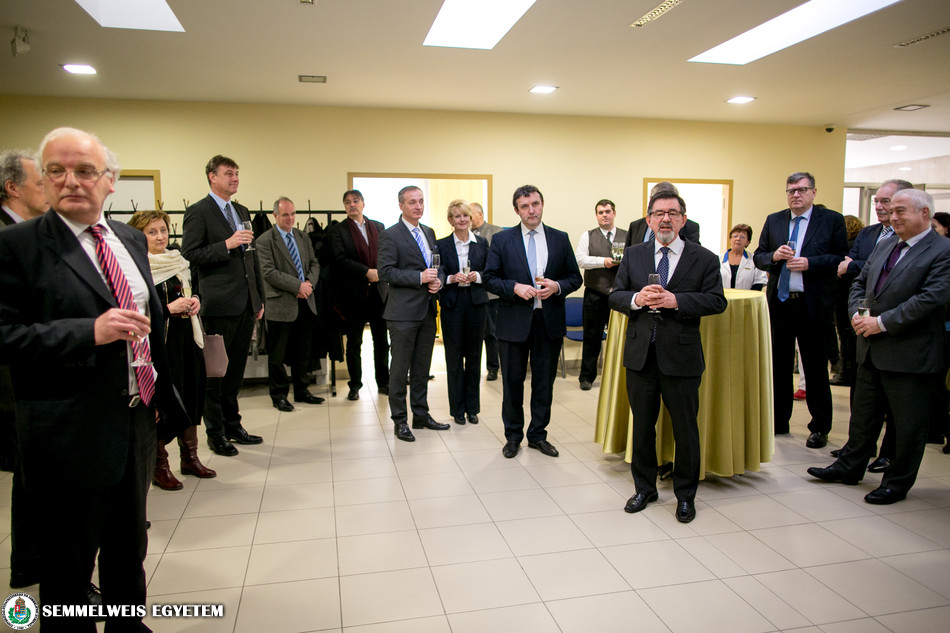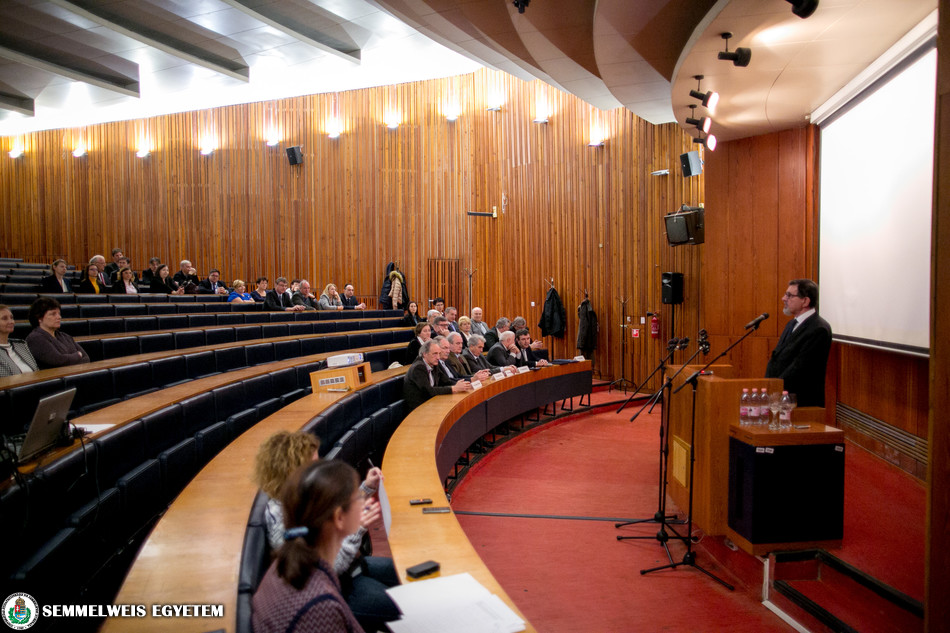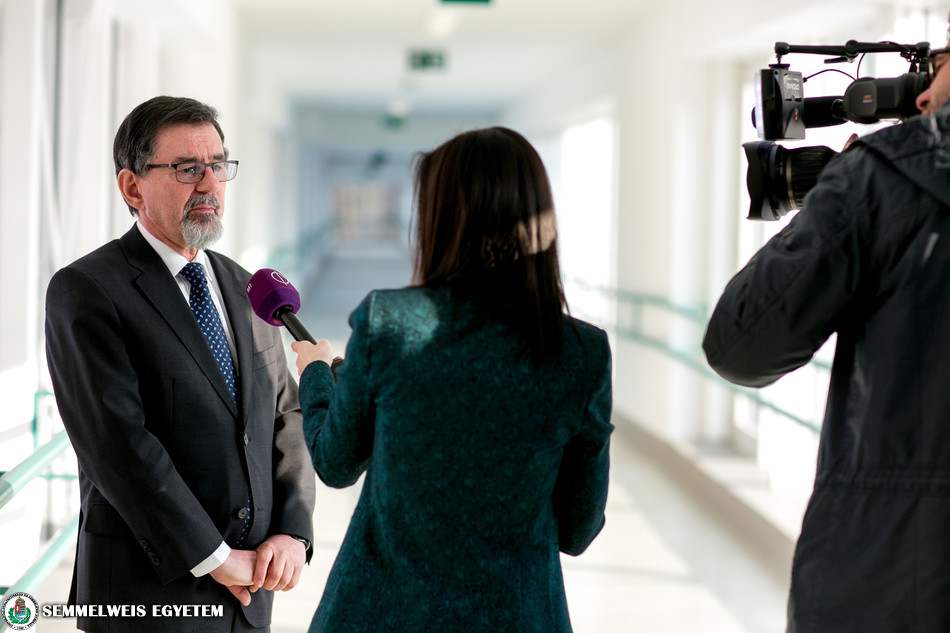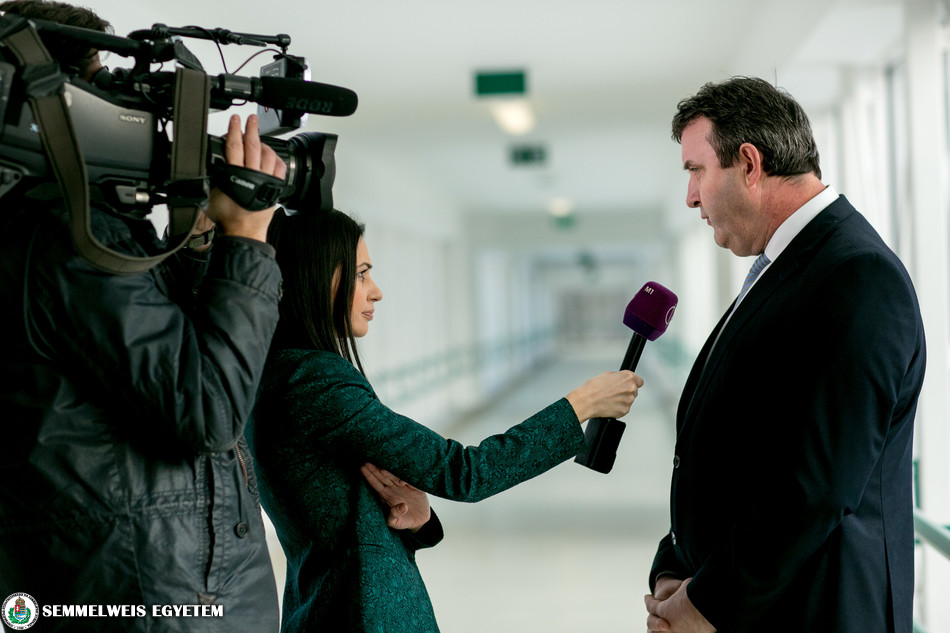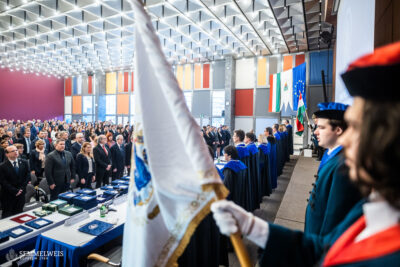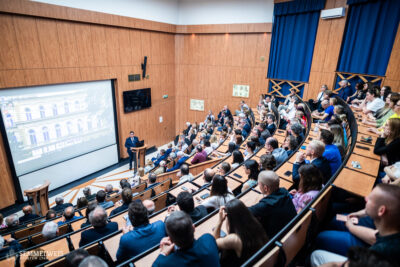The first phase of the Korányi project has been finished at Semmelweis University. In the framework of the investment sponsored by the European Union with more than 8 billion HUF, patient care has already been started at the Central Patient Care Building with a professional content in line with the first phase of the project. The recently built building has 8 floors and its area is of 20 000 m2.
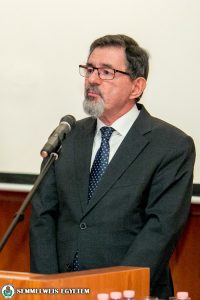 “Patient care has already been started in the new building, rooms and offices are now occupied by patients and the employees of the university. Please allow me to express my gratitude to Dr. Tivadar Tulassay, rector emeritus, who dreamed the plans of this project together with his colleagues, and who applied for EU fundings successfully. It is especially important to emphasize that the new building is located in the heart of the External Clinical Block according to the initial plans, and it has a great role in providing services to all the other clinics of this block. As acting rector, I could witness the construction process even if the planning phase was closed earlier. We are very grateful for several colleagues for their great work related to this project, but I would like to highlight the name of Dr. János Gál, previous vice-rector for clinical affairs, as well as Dr. Miklós Szathmári, who was responsible for the construction processes assigned by the rector and I must say that he personally supervised the works with great attention.”, expressed Dr. Ágoston Szél, rector during the ceremony organized as the closing act of the first phase of the project.
“Patient care has already been started in the new building, rooms and offices are now occupied by patients and the employees of the university. Please allow me to express my gratitude to Dr. Tivadar Tulassay, rector emeritus, who dreamed the plans of this project together with his colleagues, and who applied for EU fundings successfully. It is especially important to emphasize that the new building is located in the heart of the External Clinical Block according to the initial plans, and it has a great role in providing services to all the other clinics of this block. As acting rector, I could witness the construction process even if the planning phase was closed earlier. We are very grateful for several colleagues for their great work related to this project, but I would like to highlight the name of Dr. János Gál, previous vice-rector for clinical affairs, as well as Dr. Miklós Szathmári, who was responsible for the construction processes assigned by the rector and I must say that he personally supervised the works with great attention.”, expressed Dr. Ágoston Szél, rector during the ceremony organized as the closing act of the first phase of the project.
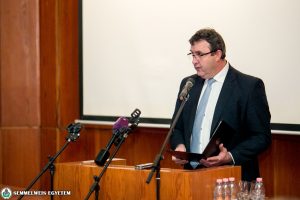 “The first phase of the Korányi project has been finished as it is stated in the grant contract. The continuation of the project is planned according to the strategic plan entitled Semmelweis XXI, which is meant to determine the future plans of the university. This plan was the topic of negotiations at a governmental level and was also discussed by the strategic cabinet. The essential elements of the strategic plan can be divided into three groups: the development of theoretical research and education; the development of the practical training and that of the clinical, hospital background of the university; the development of matters related to social issues, sport and students.”, said Dr. László Palkovics, Minister of State for Education at the Ministry of National Resources.
“The first phase of the Korányi project has been finished as it is stated in the grant contract. The continuation of the project is planned according to the strategic plan entitled Semmelweis XXI, which is meant to determine the future plans of the university. This plan was the topic of negotiations at a governmental level and was also discussed by the strategic cabinet. The essential elements of the strategic plan can be divided into three groups: the development of theoretical research and education; the development of the practical training and that of the clinical, hospital background of the university; the development of matters related to social issues, sport and students.”, said Dr. László Palkovics, Minister of State for Education at the Ministry of National Resources.
Minister Palkovics highlighted concrete issues regarding the developmental plan and he expressed that discussions are in progress with the university about the second phase of the Basic Science Medical Center; the development of Hőgyes–Schöpf-Mérei drug research campus as well as the development of the Faculty of Health and Public Administration within the same project; the development of the buildings of the Faculty of Health Sciences in Vas utca; and the extension of the skill lab (propaedeutics) at the Faculty of Dentistry. As Minister Palkovics said, there are disciplines that have to appear in the patient care portfolio of the university, such as neurosurgery, emergency care, traumatology, the treatment of chronic diseases, and these are all part of the plan. Minister Palkovics also emphasized that negotiations have been started about the modernization of the External Clinical Block, the revitalization of its buildings, the development of the premises of the Internal Clinical Block, the establishment of a Paediatric Health Care Centre, Clinic and University Hospital for Mothers and Children in Buda, and the further development of the Heart and Vascular Centre in Városmajor as well as the Kútvölgyi Clinical Block.
The Minister also highlighted the strong intention of the Hungarian Government to further develop the Hungarian medical education and to place it on an appropriate international level. As he also mentioned, the Semmelweis XXI plan is a crucial element of the government’s intention, and Semmelweis University will be able to reach this goal.
 “The first phase of the project has been entirely finished, both in terms of external appearance and infrastructure, as well as inner content and functionality. The overall budget of this phase of the investment cost 10,5 billion HUF: 8,1 billion HUF was provided by the European Union, while 2,4 billion HUF complementary funding was provided by the university and the Hungarian Government. The university has fulfilled all the responsibilities stated in the grant contract, and the European Union has been notified about the detailed financial administration of the payment. The audits performed by different organizations proved that the settlement of accounts correspond to all financial requirements. Our institution received all the needed functioning permissions, from the National Public Health and Medical Officer Service as well. We are about to successfully close a challenging but effective period.”, expressed Dr. Károly Szász, Chancellor.
“The first phase of the project has been entirely finished, both in terms of external appearance and infrastructure, as well as inner content and functionality. The overall budget of this phase of the investment cost 10,5 billion HUF: 8,1 billion HUF was provided by the European Union, while 2,4 billion HUF complementary funding was provided by the university and the Hungarian Government. The university has fulfilled all the responsibilities stated in the grant contract, and the European Union has been notified about the detailed financial administration of the payment. The audits performed by different organizations proved that the settlement of accounts correspond to all financial requirements. Our institution received all the needed functioning permissions, from the National Public Health and Medical Officer Service as well. We are about to successfully close a challenging but effective period.”, expressed Dr. Károly Szász, Chancellor.
Dr. Szász expressed his gratitude to the building contractors Swietelsky Magyarország Kft. and the Hőszer-Trade consortium, to the employees of the organization responsible for the transactions of the Korányi project, to Andrea Lengyel-Herczeg director, and to Dr. János Gál as well as Dr. Miklós Szathmári professors.
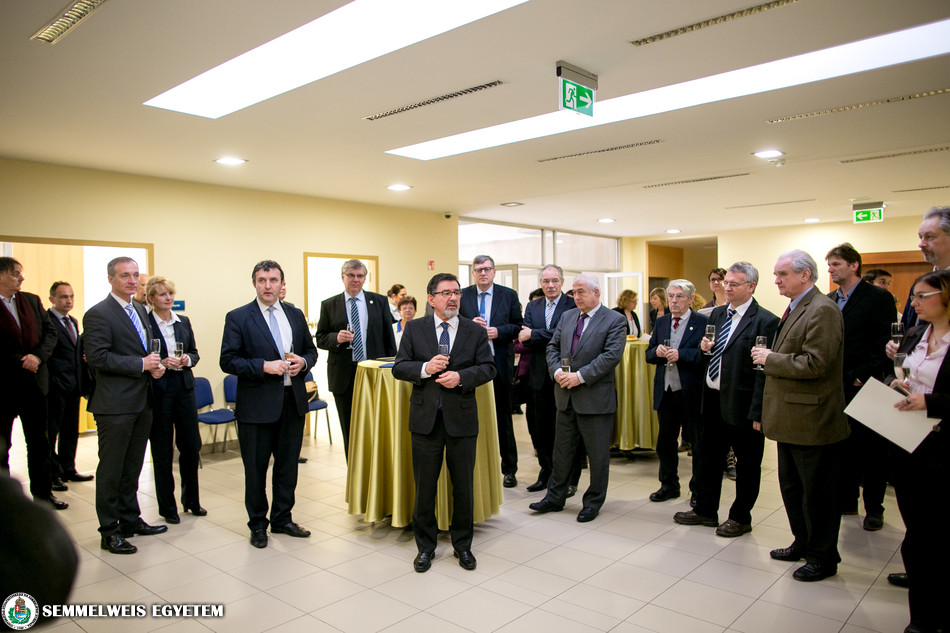 In the modern Central Patient Care Building, which meets the requirements of the 21st century, among others the Department of Orthopaedics and the Department of Radiology can be found. With the moving-in of the Department of Anaesthesiology and Intensive Therapy, the central department of intensive care has been established. In the areas renovated in the framework of the project the following departments were placed: the outpatient care of the 2nd Department of Obstetrics and Gynaecology, the ultrasound section for pregnant women and the Perinatal Intensive Care Centre. The centralization of diagnostic imaging related tasks resulted in a structure including the new central laboratory, the central sterilizer and the central pharmacy. The new building is connected with a modern corridor system to the clinics of the External Clinical Block.
In the modern Central Patient Care Building, which meets the requirements of the 21st century, among others the Department of Orthopaedics and the Department of Radiology can be found. With the moving-in of the Department of Anaesthesiology and Intensive Therapy, the central department of intensive care has been established. In the areas renovated in the framework of the project the following departments were placed: the outpatient care of the 2nd Department of Obstetrics and Gynaecology, the ultrasound section for pregnant women and the Perinatal Intensive Care Centre. The centralization of diagnostic imaging related tasks resulted in a structure including the new central laboratory, the central sterilizer and the central pharmacy. The new building is connected with a modern corridor system to the clinics of the External Clinical Block.
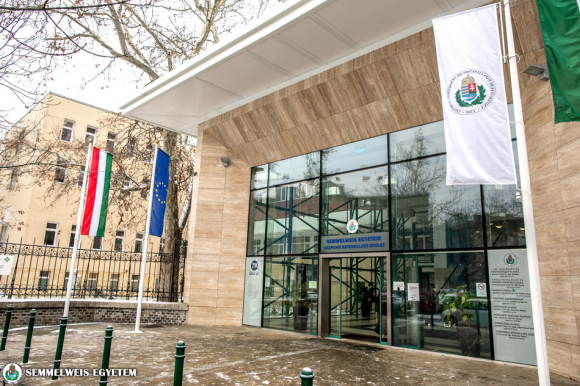 In the framework of the Korányi project not only the building, but the specific instruments and the equipment were also modernized. Among other things a new MRI and a new CT scan were installed, furthermore a well-equipped, modern block of operating theatres was established for the Department of Orthopaedics, and the most modern patient care section of the university was also enriched with new emergency care departments.
In the framework of the Korányi project not only the building, but the specific instruments and the equipment were also modernized. Among other things a new MRI and a new CT scan were installed, furthermore a well-equipped, modern block of operating theatres was established for the Department of Orthopaedics, and the most modern patient care section of the university was also enriched with new emergency care departments.
Pálma Dobozi
Photo: Attila Kovács, Semmelweis University
Translated by: Katalin Romhányi

